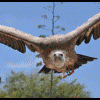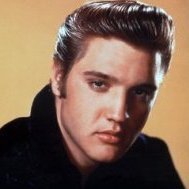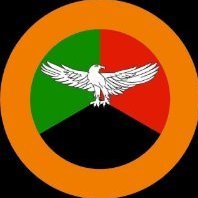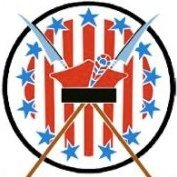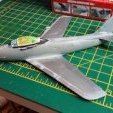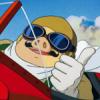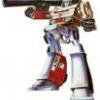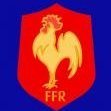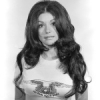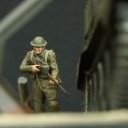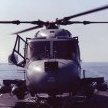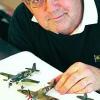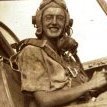Leaderboard
Popular Content
Showing content with the highest reputation on 02/10/22 in all areas
-
Hi all, here is the gallery of this Italeri kit representing the aircraft in force at the Royal Australian Air Force - 10 Sqn. W3999/RB-Y operating from the RAF base at Mount Batten, in the classic Dark Sea grey - RAF Light Green scheme. I hope you enjoy it. Click here for the WIP: by Rodolfo Masti, on Flickr by Rodolfo Masti, on Flickr by Rodolfo Masti, on Flickr by Rodolfo Masti, on Flickr by Rodolfo Masti, on Flickr by Rodolfo Masti, on Flickr by Rodolfo Masti, on Flickr by Rodolfo Masti, on Flickr by Rodolfo Masti, on Flickr by Rodolfo Masti, on Flickr54 points
-
Hi all, Here's the latest in my Fleet Air Arm jet collection, Hasegawa's aging 1/48 Phantom FG1 with plenty of modifications. This build took six months and there were plenty of additions; Quickboost resin ejection seats, with the ejection handles made from 0.3mm wire Alleycat seamless intakes Master pitot tube and AoA indicator Eduard Brassin Sidewinders and Sparrows ResKit wheels Xtradecal Phantom FG1 decals and stencils The following improvements were made to the kit; Blemishes in the clear parts removed, polished and treated with Klear CAD modelled and 3D printed fuel tanks (the kit ones weren't great) Some minor detail added to the cockpit (gauges and wires) This was my first attempt at completely airbrushing a I used vallejo acrylic primer and Hataka red line Extra Dark Sea Grey for the top, beneath, I started off using Hataka red line white, but soon switched to Tamiya acrylics. The red and white tail decal was the wrong size, so that is airburshed too, the omega symbol was carefully cut out from the decal sheet and applied. Weathering was done using Mig Panel Line Wash as well as oils for some staining underneath. Varnished with Winsor & Newton Galleria Satin acrylic. Molotow liquid chrome was used for the chromed oleos, and this gives a much more realistic finish than using paint - the metallic paint to the aft of the fuselage is Mig's Bare Metal acrylic collection - very chuffed with these. I'm really pleased with this build, it was rather challenging and took quite a few months - I've learnt an awful lot about airbrushing and various weathering techniques - it really does look incredible in my display case with the rest of my Fleet Air Arm jets (Attacker, Sea Hawk, Sea Venom, Sea Vixen and Scimitar). I'm excited about having the Ark Royal Phantom and Buccaneer pairing complete in a few more months.... Thanks for looking, now on to my new Airfix Buccaneer Cheers Ben27 points
-
Hello Everybody! Here is a kit that will please our fellow British modelers (I hope!) fan of the USAFE good ol' days: The Republic F-84F. The kit is a PJ production model, full resin, with some PE parts. Not an easy one, even if the shape and overall proportions are OK. Big caveat is the cockpit, very difficult to fit. So I elected to scratch it completely. Wheels are made of white metal but are too thin and were replaced. Other enhancements were landing gears details and air intake + exhaust. Thanks God documentation is plenty to correct the model. Painting was made with different shades of Alclad II. Not so much weathering, as photos from that era show pretty neat aircrafts. I chose a bird from the 92nd FBS/82 FBW based in Woodbrige-Bentwaters. because of the colorful markings. The little lightings are home made (not so easy!) as well as the squadron insignia. Microscale decal sheet 72-330 provided some they are but largely oversized, more for 1/48 than 1/72. Here are the photos: The real thing: Mine: ...and the little diorama: the Ford F2 pickup is from "F4 Models", all resin and very difficult to build (It takes me hours to have a correct result) and the MD-3 cart comes from "Videoaviation.com", very fine. For the grass, I haven't found the correct one for Bentwaters! That's it, enjoy the photos and as usual, critics most welcome!26 points
-
A comparison build in more ways than one. Both kits first appeared in the 1970s, and whilst not necessarily the first choice for a Gladiator nowadays, both are still pretty decent, The Heller version as repackaged by Humbrol, with rather uninspiring box art has some lovely surface detail, but is marred by the huge holes for the rigging and a cockpit that is very narrow to allow for the open canopy option. Matchbox biplanes were always some of their better efforts, and the Gladiator is still a worthy inclusion in Revell's range. It doesn't quite have the same surface finesse, but apart from the cowling the overall shape is probably better. Both built mostly OOB, the Heller has the somewhat pointless addition of the the Airwaves cockpit etch, and some of the displaced plastic has ended up in the Matchbox 'pit. The Heller uncovered wheels are a poor effort, so were replaced with ones from Pavla, whilst the underwing gun barrels were Quickboost. I've tried to show two aircraft from the same small batch at very different points in their careers. The Heller version represents an aircraft (N2313) of 605 Squadron just before the outbreak of the war, when 'nearly new', and was inspired by the superb aerial photo of the vic of three in the Wing Leader book. Decals from Kits-World, Alclad white aluminium undersurfaces with Mr Hobby aqueous dark earth (which is very light) and Tamiya dark green on the topside. In contrast, N2308 is represented as on the books of 247 Squadron in the Autumn of 1940 - from 605 Squadron, then to France with 615 Squadron, where it acquired the shadow compensating camouflage scheme, before being one of the few 615 Squadron Gladiators to return to England after the fall of France. At some point in time it was fitted with a Watts 2 bladed propeller. Xtradecal markings, Humbrol duck egg blue (23) for the undersurfaces, and the top surfaces in dark green, light earth (both Humbrol), light green (Colourcoats) and dark earth (Xtracolour). Jon24 points
-
Hi fellow modelers, this kit I built recently for a book project using the Hasegawa kit with some extras, e.g. Master brass radar dipoles or Quickboost stuff for gun barrels and engine intakes. The kit should represent Oblt. Werner Briegleb machine from 7./NJG2 in March 1945 known from two period photos I was able to find (e.g. Nachtjäger book from Classic). The kit was painted with Gunze acrylics in RLM75/76 colors with RLM81 mottles, while the decals came from AIMS decal sheet. Cheers Libor20 points
-
I got the idea for this project from Airdoc decals Ju88 Pt.4, a Ju 88 in "Mäander"-Camo with Hohentwiel radar and without bottom gondola. Very attractive, I thought. The information you find in the net goes as this: Ju88 A-6 originally were Balloon Cutters. After BoB, the remaining aircraft were sent home for refitting for the anti-shipping role. The balloon-cutting system and the bottom gondola were removed and FUG200 and 217 were installed. The aircraft were renamed Ju88A-6/U. Other sources claim that the A6/U never existed and they were simply converted A4 or A5s. We will probably never know, but there are photos of PN+MT which is a Stammkenzeichen. So we do not even know for sure the unit. Since there is litte more information available, I decided to follow the instructions from the Hasegawa kit for the same aircraft which they released in 1/72. I used the Dragon/Revell kit: The bottom gondola was not installed, night exhausts, FUG217 on upper wings and brake lines were scratch built and I used the Brengun FUG200 PE set. Hasegawa want the bomb pylons fitted, I was not sure about that either since there is no aiming system without the bottom gondola but I followed the instructions. Was it a bomber or a recce plane? During the build I ruined the model because I could not get the squiggles right. So I removed all the upper paint and did it again. Unfortunately all the decals were destroyed in progress. The Airdoc sheet contains all the necessary letters, but the Werknummer was lost forever. So it is missing. The second attempt was slightly better, I am not really pleased but I left it as it is now. In the cabinet it looks ok. Thanks for looking, Volker19 points
-
Hi there, Finished this one two days ago. A very nice Tamiya kit, build without any problem No aftermarket needed here, I've only used some masks, and Hi Decal line decals. So, here's my interpretation of an Iranian F-84G. Hope you like it. I also want to thank Tom Cooper for all his help.18 points
-
last build finished, custom nose art decal and masks for the lettering, hope you like it, history about this Mustang http://www.leteckabadatelna.cz/havarie-a.../detail/480/17 points
-
I had to build this to go with my Airwolf model, theres no kit for this so it was all a bit of bashing, the stars are individual decals. Along with her sister.15 points
-
#20/2022 After the 109 Emil, here´s my dad´s second Luftwaffe subject this year. Hasegawa kit, which comes with an early style and for this version wrongly shaped ETC, took a correct one from an older limited Hasegawa 190 kit. Also this kit has only the late style wheels, took spoked ones from the sparesbox. Eduard seatbelt used, EZ Line for the antenna wires. Fuselage decals are leftovers from the ProModeler 190G-2/3. The cross and triangle applied on the left side were slightly damaged, had to do some paint touch ups. Camo done with MRP RLM74/75/76. For my dad the RLM74 was too much greenish, therefore he mixed it with some more grey. Brake lines done with plastic rods and lead wire, landing gear retraction wire with fishing line. Build thread here https://www.britmodeller.com/forums/index.php?/topic/235113852-mickey-mouse148-focke-wulf-fw190a-5u3-iisg1/ Model shows a 6.Staffel, II. Gruppe, Schlachtgeschwader 1, in Poland around January 1943. DSC_0001 by grimreaper110, auf Flickr DSC_0002 by grimreaper110, auf Flickr DSC_0003 by grimreaper110, auf Flickr DSC_0004 by grimreaper110, auf Flickr DSC_0005 by grimreaper110, auf Flickr DSC_0006 by grimreaper110, auf Flickr DSC_0007 by grimreaper110, auf Flickr DSC_0008 by grimreaper110, auf Flickr DSC_0009 by grimreaper110, auf Flickr DSC_0010 by grimreaper110, auf Flickr DSC_0011 by grimreaper110, auf Flickr DSC_0012 by grimreaper110, auf Flickr DSC_0013 by grimreaper110, auf Flickr DSC_0014 by grimreaper110, auf Flickr DSC_0015 by grimreaper110, auf Flickr DSC_0016 by grimreaper110, auf Flickr DSC_0017 by grimreaper110, auf Flickr DSC_0018 by grimreaper110, auf Flickr DSC_0019 by grimreaper110, auf Flickr DSC_0020 by grimreaper110, auf Flickr DSC_0021 by grimreaper110, auf Flickr DSC_0022 by grimreaper110, auf Flickr15 points
-
Hello all, This is one of my dad's builds, finished about a month ago. The kit has gone through extensive modifications: -re-profiling of wing-tips -opening of engine cowling slots and modification of cowling -kit engines extensively modified -trim tabs replaced -wing trailing edges thinned -fabric effect reduced on all flying control surfaces -scratchbuild windshield, interior and mk 101 cannon -canopy replaced -blast tubes added -resin wheels and exhausts Decals are from Exito. Happy Modelling!14 points
-
Blackburn Buccaneer S.2D No. 809 Naval Air Squadron, HMS Ark Royal, August 1978.13 points
-
More masking in my modelling life this weekend; couldn’t put off doing the Valley Hawk for ever… So, as to the red. Using this, so that it’s the same colour as the JPs and Chippie. Weirdly thick paint; but thinned with Tamiya X20A at something like two-thirds or 75% thinner to paint, it airbrushes really nicely. It doesn’t cover well tho’, so the plan is to first lay down a light coat of Tamiya Red X-7 first. Masked (pain) and Tamiya’d. Revelled. Gorgeous colour. Next bit of unmasking is a bit nerve racking. Cue bleeds and paint lifts etc? I’ll take that. No bleeds. No lifts. Decent line; not exquisite but decent. Needs to harden and then fine scrutiny and any minor tidy up needed. Looks like a toy at the mo - that’ll need work.13 points
-
This is 1/32 PCM Hawker Hurricane Mk.1 from 43 Sqd during Dunkirk evacuation. I saw the model built by Tony OToole on some model sites and was inspired for this project. Cockpit enhanched by seat and control stick from Grey Matter Aviation. Canopy replaced with Fly's vacuform product I have used Gunze Sangyo acrylics as usual. Grey fuselage code letters are from Xtradecal set. Happy modelling13 points
-
I'm really an aircraft guy, who dabbles in armor occasionally, so please don't be too harsh! This is Dragon's M4A1 (76) Sherman commanded by S/Sgt Lafayette Pool, who is widely recognized as the US tank ace of aces, credited with 12 confirmed tank kills and 258 total armored vehicle and self-propelled gun kills, over 1,000 German soldiers killed and 250 more taken as prisoners of war, accomplished in only 81 days of action from June 27 to September 19, 1944, using three different Shermans. Built more or less 'out of box' and painted with Tamiya acrylics. Thanks for looking, Colin12 points
-
Mmmm...🤔 Xtrakit would have you paint the cockpit Interior Green with black instrument panels. While I agree on the black panels, the Interior Green doesn't agree with photos, which either show a pale colour (B&W shots), or in colour, something akin to mid grey. These are the cockpit parts; it's all a bit fiddly to put together, but I added the parts to the port side part (throttle and trim wheel), the starboard side part (instrument panel), headrest to seat to bulkhead and control column to cockpit floor first, then put these subassemblies together as fewer overall bits to stick together. And after paint. The 3D decals were a bit of a pain to get adhered and so I soaked them off the decal sheet, let them dry and then attached them with CA. To my mind the belts and cushions (3D decals) are a bit pale: I'd suggest painting the cushions and replace the belts with PE. Then the whole lot attached to the port fuselage side. Sadly you won't see much of it, but it is a little gem of an assembly. And I took this shot just to show how tiny the cockpit is when compared to the vastness of the nose section. I have seen references to 'a second crew member' being an option, so I assume this second person would have had their own games room, library and study somewhere in there.12 points
-
Hi all, I built this fir a friend that served with the 17th Sqd when they used these aircraft. And yes he loved it.11 points
-
Good evening peeps, Here’s my latest project which I’d like to share with you all. It the companion to XM607 which I posted a couple of months ago. Here is the Airfix offering. Not without its problems…and not the kit or the build…so purchased for the dreaded evil-bay to find out it’s missing 2 sprues, decals and instructions….😡. So purchase another but it was a B2 booking in a K2 box….aggghhhh. So with lots of help with the guys from my model club, it’s finally finished with aftermarket decals and lots from the spares box. The “dayglo” is all masked so I could try and replicate the faded look, as is the attempt to show the faded paint on the Victors stationed at Wideawake in ‘82. Anyway enough waffle, hope you enjoy. I loved building this kit, no filler, and intake vaines worked perfectly👍 And here are the Vulcan and Victor next to each other. My tribute to the heroism and airmanship of the two crews 40 years ago. Many thanks for looking. Cheers Si11 points
-
This is Tamiya's 1/35 Jagdpanther. The only change is a Hornet head for the crewman. I decided to add the schurzen at the last minute, with hindsight I'd have used some aftermarket brass. The mud effect is oven dried soil from the garden (don't tell the missus I used one of her baking trays!), it was ground in a pestel & mortar & applied with decalfix. Not 100% sure about the look of it though but probably authentic for the little known Manchester campaign. Any comments, observations & criticisms welcome. Pete Thanks for looking.11 points
-
Thanks Mike - pleased these are selling well - thoroughly deserve to. And yes thoroughly enjoying the build. Thanks Terry - cheque is in the post Aren't they! Looking forwards to it Michael And same for you Michal Close examination of the Getty images shows that Surf had deck "edges" done in dark grey or black colour wheras the deck proper was 507A. I chose to represent the edges in Non-slip grey so with some careful masking We get to this ... which doesn't really stand out and in hindsight I should probably have used black as the "edge" So now to PB10. RF of 10 so darker than B15 but not a s dull or dark as the hataka offering. I settled on Vallejo Modl Air Deep sky : Russian AF Blue at a ratio of 2 : 1. And it was an immediate reminder as to how well enamels cover compared to acrylics. It took 4 separate coats to get to this I'm satisfied that this is close enough. And so to a quick diversion, XY resin studded anchor chain is no longer available But "Bunker Studios" have releases something similar and this arrived from Hobby Easy - 5 day delivery from across the world and very reasonable prices. They are currently due a restock A left-over piece of XY is above and the Bunker studio below. And yes 2 small pieces of chain DID come in that size box It is slightly finer and marginally bigger. The 1/700 offering is similar. A worthy alternative IMHO One box supplies 2 pieces of 1/350 chain each about 11cms long Thanks for looking More soon Rob11 points
-
Another model from the 90's The idea for the paint is getting ready for deployment going some where hot. Pete10 points
-
There have been quite a few builds of the new Vulcan kit recently, so apologies for the Vulcan overload. But many of you will probably know I mostly make 1:144 airliners, so for me, this is a bit of a change. I've had this Airfix kit sitting waiting to be built for the last 8 or so years. This is the old tooling of the Avro Vulcan in the "XH558 Vulcan to the Sky" red box edition. I only saw the Vulcan fly once, over Gloucestershire Airport in 2015 I think it was. I didn't get there in time, so I stopped on a bridge a mile or so away just in time to see it swooping low over the airfield. For this build, I used Humbrol 165 spray, which is mid sea grey. The instructions say 164 dark sea grey, but 164 isn't available in a spray. In any case, I think 165 works well with the camouflage. The green is Revell 68 dunkelgrün, brush-painted. I would like to build the new one just to compare. I've really enjoyed this build - it's given me something different to do, and for me at least, it's a nice subject to display alongside my airliners.10 points
-
Hobbyboss 1/48 converted to strike version A (Nozzle with two deflector, shell covers, other 20mm gun). Added Maestro PE, resin RB04 missile, ejection seat, decals Camo - D as David - F14 Halmstad base Sweden10 points
-
Hi All, Making some good progress this weekend! First job of the day was a gloss coat: Next the decals, which were comparatively few. With the stencils, I elected to only apply them to the OD areas of the upper fuselage, and not at all to the lower areas - I didn't think that the RAAF would be taking the time to reapply them. Here's the result: You can see that I used some spare black decal to represent the camera windows - I'll give them a gloss coat last thing. Next another gloss coat after the decals had settled down: I elected to use a Flory Grime wash on the lower surfaces, as I felt that Black would be a bit harsh (this was, however, used on the upper surfaces). Here's part way through removal of the Grime: And here with the whole lot cleaned off: That's popped quite nicely! Here's underneath: Next was a flat coat. Now I'm trying out Vallejo matt coat on recommendation. It does require considerable thinning, but I'm happy to report produces impressive results: That is FLAT - much better than Tamiya XF86, which was my previous go to. You can see that I've added the superchargers, which add a nice contrast - I'm looking forward to doing the exhaust staining on this! Next I unmasked the glazing: Noice. The final job for the day was the addition of the drop tanks, and the undercarriage and doors, which were all predictably superbly engineered. So here's a couple of shots showing the state of play: I reckon with favourable winds I might get this beauty finished tomorrow! Thanks for looking, Roger10 points
-
9 points
-
Hi everyone, Here's my diorama of the 101st Airborne, ready to embark on D-Day from Upottery in Devon in 1:72 scale. The C-47 Skytrain is from Italeri, paratrooper figures from 3djson and a Jeep from Oxford Diecast. I wanted to add some further interest so added some cockpit and interior LEDs and fitted 3v motors to the engines. The apron is printed concrete sheets and the rest is scatters and scenic grass. I made the base to house the cables and batteries underneath. I really enjoyed making this scene. At the start, this wasn't going to be anything but a change from building fighters and then things escalated! I hope you like it. Comments and criticisms welcome. Happy modelling folks! Engines on... Interior lights on and final kit checks...9 points
-
Subtitle : The hunt for the Desert Pink. I am Happy with this Result (Otherwise I would not publish.🤔) 1/144 DML wit Kits World decals I took a Photo with a grey card ,trying for color accuracy. Aftermarket resin for Interior(can't see), Wheel wells (Can't really see),Exhaust(can See) Landing gear (Can See) Master Brass Pitot. three moves and I haven't bent...YAY Vallejo "American Sand" how Ironic and USchi powders for Exhausts Thanks for Looking Comments Always Welcome Cheers Bill D.9 points
-
Cockpit is completed and in the centre wing assembly, I did have some pictures but it seems the memory card has failed so I had to go to Curry's for a new one. Even without the clear parts most of the cockpit is lost from view. And with the transparencies and tail cone on. I was also lucky enough to find a storage box for the finished plane at Wilco's for a tenner, outer wing are just tapped together for a size test.9 points
-
Thanks for the belated birthday wishes @giemme, @Biggles87 @Hamden, @keefr22@general melchett @corsaircorp and @Cookenbacher. Always better late than never! Most of my recent modelling work has been taken up producing more 1/72 Target Drones and a couple of 1/35 AFV's (for my Tank Museum display), but this week saw some progress on the two Grunau Baby kits. I decided to build both as is, and not convert one to a Prefect at this stage. There will be a Prefect at some point, but that is likely to involve 3D tech and will therefore take more time when I eventually get fully kitted out for that. Meanwhile, I felt the need for some (almost) out of the box modelling. All internals were airbrushed Tamiya interior green, sealed with varnish and then given a panel wash of Warhammer Nuln Oil which I have found to be a very effective but subtle dark wash. The seats were completed and painted, one with basic harnesses from masking tape, the other using the Brengun etch. You can probably tell which is which 🙄 The gliders themselves are quite small, and the cockpit opening very small, so very little will be seen, especially as the wing leading edge blocks most of the view inside. Both units cemented inside respective fuselage. Those headrests need mould release pin marks removed. 😬 The Brengun set provides two lots of etch for the two gliders in the kit, but also two different types of IP for each one, along with some acetate instrument dials, again of two distinct types. The two types can be seen upper right, with repeats to the left. I decided to put one of each type in each kit, just so that there are some differences. These are the two larger panels with the acetate dials glued behind them, ready to be trimmed. The picture is not great due to reflections, but you really can see the dial detail when "in the flesh". I painted the rear of the acetate white to emphasise that. The larger panel fitted in place in one of the gliders... And the smaller one in the other..... And, already, I got to close up both fuselages. 🤸♂️ Both have had a small amount of Mr Surfacer 1200 applied to fuselage seams, as a fine filler. Once they are fully dry tomorrow, some sanding and cleaning up to be done, then the flying surfaces will follow. The twin kit gives a very decent set of decals for several immediate post WWII Czech and Slovak examples, but I'm considering a couple of different finishes for these, one RAF and one French Air Force to keep more within the theme of Cadet trainers. Examples of these appear in the Fly 1/48 releases I understand, and look like this..... I'll obvs need to source decals for both these versions, which hopefully won't be too difficult. More soon. Terry9 points
-
Long, long ago, in a Galaxy far, far away, Airfix produced a Battle of Hoth playset. 3 AT-AT's (One damaged) and various figures with a base mat. Fast forward to a couple of months ago, and I got the damaged one from the bay for about seven quid. Moulded with battle damage to the body and damaged legs, it could have been a lost cause. But no! I got some baseplates with Lucasfilm moulded underneath, and used not quite Lego, card and various bits to build a section of an almost forgotten Empire outpost. The AT-AT was repaired with card and filler. I've added non standard parts so it's not quite as per the films. I was inspired by a series of posts by @Gekko_1 to use a custom paint job. I've seen huge warehouses being built which are blue at ground level and which fade as they go up to almost merge with the sky. So I did a version of that. The scale is about 1/150th If this were wading slowly offshore (as they do in one film) it might merge with the sky. (Maybe) I added various parts including a searchlight under the jaw. The guns are Guitar wire and tube. The original model doesn't have the prominent 'toes' so I added them from card. Just to prove that I painted the other side! That oval bit at the back is an addition too. The original model was a not too accurate snap kit. Here's the base. Power station on the right, Comms base on the left. The yellow comms tower was a Kibri crane jib. Drone shot. Spot the greebly! There is a build thread here https://www.britmodeller.com/forums/index.php?/topic/235113899-at-at-in-miniature/ It's been a fun build with a unique result. And all for around fifteen quid. Modelling as I like it! Please feel free to comment, or send chocolate biscuits to the usual address. Thanks for looking, Pete P.S. I'm taking a Sci Fi break for the next one (or two). Hop over to the Muscle Car section for more...8 points
-
It did not turn out as I had hoped, but it's got other problems I elected not to fix having built the Modelsvit Tu-22 just before this one. I realised after taking the photos that the Kh-22 stand-off missile was drooping slightly as I only had it held in place with Blu-Tac, although it is now glued correctly in position. The thing I can't understand about Trumpeter is why they didn't compare their 3D digital model with the extant Modelsvit kit before producing their moulds. Had they done so, it would have prompted them to question why their digital Tu-22 had some significant differences from Modelsvit's kit (e.g. their thin fuselage spine and tall cockpit canopy or lack of ailerons), and have led to a re-check of plans or photos. Had they done so, along with matching numerous other minor details the Modelsvit kit correctly possesses, Trumpeter's Tu-22 would be the superior kit due to its much better parts fit. Finished 10 days ago, my Modelsvit Tu-22B 'Blinder-A' was converted from the Modelsvit Tu-22KD 'Blinder-B'. As mentioned already, the Kh-22 missile is drooping a lot in these photos (since fixed):8 points
-
Hello to all.I present you my latest F-5E conversion into an Iranian Hesa Saeqeh.The kit I used as a base is the new Dream Model F-5E.The rest is OOB.8 points
-
First task for the Malcolm Olley car, assembling the powerplant which is a DH Goblin more normally used to power Vampire jet aircraft. jc5 by Matt Farmer, on Flickr The pieces can all only be located in one orientation, so after some thinning of the mating surfaces construction was a simple matter. jc6 by Matt Farmer, on Flickr jc7 by Matt Farmer, on Flickr The part for the parachute cans is stretchered across which aids alignment and will not be seen. The top face is helpfully marked as such. jc8 by Matt Farmer, on Flickr And thats the engine assembled. It does not have to be installed anytime soon, and can be painted up first. I know many of you would take the opportunity to add loads of detail but I will probably leave it as is. Matt8 points
-
Morning all More progress. Dashboard finished and so is the interior. I had to mix this tan colour as I couldn't find a ready made one. Quite pleased with how it has come out. Next step is to do all the chrome work on the body. Thanks for looking, Nick8 points
-
8 points
-
One thing I did note was the instructions, which are a bit of a minefield. I started with the intake area and the instructions show a number of plastic items and a PE screen. It's quite a fiddle to get together and I elected to replace the PE with brass wire. However, there are two engine compressor faces (parts 68) that need to go in the green area highlighted, but they are not shown in the instructions: Step 6 has you attaching the whole assembly to the fuselage, still with no parts 68 fitted: Adding to the confusion, the instructions tell you to attach parts '68' incorrectly in the exhaust areas each side! These should in fact be parts 69. Not a major issue but if you don't spot it before gluing the fuselage halves together, you'll get a bit of a see-through look. This is how it looks - should look! And with the PE replacements in place. Cockpit next, which is Step 1. It's what you expect. I imagine the rest will be in the correct order, but I make no guarantees!8 points
-
Hi, Here's the last Star Wars dio I made from this Bandai walker. It's called "Lost on Endor", I hope you'll enjoy it !7 points
-
Hot on the heels of the Shelby Cobra comes the Mercedes W154 and it's hard to imagine a more different kit, both in subject and fideity. The 154 is one of the worst kits I have ever encountered. The box says it can be built as the 1938 Tripoli Grand Prix car, but 15 minutes spent on Google confirms that it can't. It has totally the wrong shape of body , more resembling the much later version used at Donington and exhausts which run beneath the body which would be OK but they were hidden in underbody ducts which would prevent the models body from being removable, thus hiding all the detail provided in the kit. After Tripoli, they were changed to an external configuration because of cockpit overheating. On the plus side, the model has a lot of fine detail in the chassis and engine but is a classic case of ignoring the basic shape and being blinded by the detail. I wondered for a long time how to modify the body but it was well beyond my skills and I was tempted to get rid of it completely. A chance search showed that the Mercedes car dealers marketed a ready built for publicity and that it was an acceptable shape. If I married the best of the kit to the Mercedes model (I'm not sure who made it) then I'd at least have a decent model. But it would mean throwing away the chassis and underbody detail of the kit because the material of the diecast was too hard for me to cut. That was a small price to pay so I dismantled the ready-built, resprayed it and rebuilt it like a kit. I chose the car of Hermann Lang in the Donington GP because, unlike the rich or aristocratic members of the Mercedes team, he was first and foremost an engineer, lacking the finances of his team mates. He also was (as far as I know) the only driver to use a bonnet strap which added a bit of interest to the model. The front grille, by the way, is from the original kit and is made from many pieces of p/e! My real moan about the kit is that it took such a tiny amount of research to prove that it was wrong. Why couldn't the maker do this? Dave7 points
-
I found the below photo back in February and it intrigued me enough to buy the Airfix 1/72 Hurricane to try and replicate it. I sometimes get bored with doing the same colour schemes all the time and liked the different look it gave the aircraft. I liked the idea of having the plane in the unfinished primer stage with just the under sides and top wings finished (although cannot tell from the photo if the roundels are in place, but I decided to add them to mine). Been off work for a few days this week due to covid so it was my little project to stop me getting too bored. It was different to finish a kit with no weathering (other than a panel like wash (not that there are many panel lines on this kit). I couldnt figure out from the photo if the tail and access panels were painted silver or white. I decided to go with white.7 points
-
I finished the Night shift this morning and am now on annual leave for a week. Might actually get something done despite the masking for the black scaring the living daylights out of me. Aha*, I hear you say. You chose this scheme, get on with it. Oh all right then, if you insist. Testing the technique towards the tail to see how it goes. Not perfect but once I've got all the black on there is still the HSS to do so there shouldn't be too many touch ups. Thanks for looking, Cheers, Alistair7 points
-
Right, I'm going to call this one done. The last few bits were added today, unfortunately when I was adding the decal I put it on the number plate upside down, hence the plate being at a strange angle. But I can live with it and can't fix it without destroying the decal so it's staying that way. The decals on the mirrors aren't as good reflectors as I would like either, I guess I should really have done them in BMF but again it's something I will live with. Neither of those issues bug me as much as the wipers which don't quite match with the instructions which show them parked at the angles I've shown them. But that just doesn't look right with the angle of the blade in relatioin to the arm, and having just googled the splitty it looks as though they should park on the same side of each screen. So before the RFI I will be adjusting one wiper to suit. The RFI will follow when I've finished waxing it and given it it's photoshoot, but hopefully the pic above will give an idea of how it's ended up. Thanks to everyone who has commented, liked or just generally looked.7 points
-
Good morning! Thank you to everyone for the links and nudges in the right direction. So! I've been working on this build every night now, well apart from last night, too much sauce. It's been pretty straight forward so far with the one exception of having to use super glue when assembling some of the parts. Definitely a case of check once, twice, etc and then glue. I started following the Tamiya instructions and adding the AA parts accordingly so assembly has taken on a course of its own. The Tamiya instructions start with the lower hull rear. The first job was to remove the plates for the smoke dischargers and towing hook and blank off the slot. Below some added bolt detail (the alignment could have been better), and the replacement back plate. In hindsight the kit part would have been easily altered but hey ho. I added the final drive greasing caps? with some stretched sprue. So at this point I started to have some problems with aligning and fitting the towing bars, stowage box and getting the angle of the towing pintle looking right. I think that the towing bars are slightly over scale which means that the spacing between everything is tighter than it should be. It took a bit of trial and error to get everything looking about right and so the location marks on the resin back plate were all removed. There is a really good clear photograph online of this ARV and to my eye the top set of towing bars is higher than AA would have you place it which helped space everything out no end. The plastic card square is to kick off the stowage box from the back plate. The detail at the end of one set of towing bars needed improving a little. Before........ And after. The towing pintle. The instructions would have you glue the hinge brackets to the rear hull first but I opted to glue them to the pintle first. I figured it would be easier to align it on a flat surface. I assembled it perpendicular to my cutting mat. This ended up, despite looking right on the rear hull, too much of an angle to position under the lower set of towing bars. The instructions would have the top of the hinge brackets inline with the bottom of the rear plate. Again for my money this was far too high up, so I moved the assemble down approximately 3mm. Finally here is everything together. A case of trial, error and patience until everything sat right. Forging ahead at this point assembling the lower hull, suspension, road wheels etc. Straight forward enough. A quick fix with the Besa muzzle. Reamed out with a hobby knife. Next up the snatch block. The resin hatch had a handle missing. A shame as the other handle was beautifully molded. A fuse wire fix for this. The first of the photo etch added. The curved piece was bent over a drill bit after bending the ends at right angles. It doesn't specify this in the instructions so it was a slight gamble that it would end up too short. It made for good contact points for gluing though. Assembled. Consisting of six resin and four photo etch parts. And in place. Added grills from Eduard. As you can see this part had some horrible air bubbles in the casting, revealed after the casting block was removed. I filled them with plastic putty initially but it was obviously too thick to set so it was removed. The second try involved filling the holes with small pieces of plastic, bonded with super glue and then filled with putty. The holes fixed and the details going on. The hatches needed some attention as the castings were a little uneven so some sanding was required to get them to sit flat. The location tabs for the brackets would have them opposing each other. Having consulted some photos and John Tapsell's excellent scratch build of this subject, the two tall brackets need turning to run parallel with the jib arms. Location tabs removed and repositioned brackets. And in place. Attachment point for jib added. A point of note is that the vertical flange is on the center line of the hull. And finally the attachment points for the jib. As always thanks for looking7 points
-
Hello guys and girls.I hope you are doing fine.I am here presenting my 1:72 AMP EE Canberra of the RAAF.I used the god but quite challenging AMP kit.its details are really nic but the fit is terible.In the end I managed to build it into a RAAF Canberra used in the vietnam war.Painted in tamiya acrylics.Decals are from the HPM decals sets.6 points
-
As regulars on here will know, I finished the scratchbuild of HMS HECLA in 1/350 a few weeks back and took a short break away from the bench to try to get on with other jobs (including stripping all the paint from the body of a 1982 TVR Tasmin in preparation for a full respray). But with 2 weeks holiday looming in a cottage in the Yorkshire Dales, I thought I had better find something in the stash to take with me that I could progress when the weather precluded getting out into the fresh air. Problem was, what to take as most of my builds tend to start with a lot of spraying and there was no way I could justify airbrushing on someone else's kitchen table! So with that in mind I thought how about trying to progress a couple of the kits on the shelf of doom which for the most part have had all of the spray painting already completed. One of these is the venerable 1/600 Airfix HMS LEANDER which I am converting to HMS LONDONDERRY as she was when I served on board in 1983. The intent is to portray her alongside in Gibraltar to represent this photograph that I took of her in September of that year from the top of the Rock. Now I started this conversion aeons ago well before I joined BM and at a time when I didn't tend to take very many photos of the models as they went along. So I have these 2 images that were taken in late 2015 that show progress to that point: And then a couple of months later: Since then I have done some more work on her mainly with PE additions and some paint so today she looks like this: First job I sense is to clear away about 5 years worth of dust and rationalise what next. Problem that I have is that there is so much on here - notably things like the funnel and main mast that if I were starting this today, I would simply draw in CAD and 3D print. But I'm not going back - to do that I may as well start afresh with another Leander class hull so best make the most of a poorly started job. Thanks for watching6 points
-
"Name?" "John Smith." "No, sorry - full name." "John Twelve Acacia Avenue Smith." "That's an ... unusual name." "Yes, it was my dad's idea. Some accountant told him it would be more tax-efficient if he put his house in his son's name."6 points
-
A few different things to report. Firstly, I added the bumper strip fairings (not sure what else to call them) that (I guess) stop the rubbing strip catching on things (like quay-side rails). Thhis was done by cutting the rubbing strip back to the planking and inserting a short length of 8 mm maple, I used a simple jig to get them all the same height Once these were in place, I added the outer strip to the rubbing strip and the outer fairings, overall the rubbing strip sits 1.5 mm out from the planking (that's ~ 3 inch full size) and is "D" shaped. Then the fairings were sanded to profile Next the forward upper rubbing strips were added. These are actually triangular, so I halved some 2mm square line on the diagonal and glued to to some 3 mm x 0.5 mm strip wood that was raised 0.5 mm above the deck. This picture may help explain my tangled English Those three short lengths of 0.5 mm thick strip are there to help me align the 3 mm under-strip. Doing this gave me a land for the forward gunwale which sticks up ~ 4 mm from the deck at the bow and tapers smoothly down to a 1 mm kicker along the timber deck Here you can see it before sanding to the smooth curve and the triangular shape of the forward rubbing strip (bit out of focus sorry) The kicker was made out of 1 mm square lime, two high until the start of the metal checker plate rear deck section, 1 high thereafter. Very careful study of this picture gives a good clue to the deck plating. As I know how big the galley hatch is, it is possible to work out that the deck plates are 1 m square, laid on top of the timber deck as reinforcing for handling the sweep gear. The anti-slip surface is a series of half round blisters ((like rivet heads) @ 70 mm centres. From other photographs, it can be seen that the plates butt against each other on the square (so the joints form a cross). I've drawn these and sent them to be etched in 0.38 brass, hopefully with me early next week. The main deck will be planked in 2 mm x 0.5 mm maple strip-wood, but these is no point doing that underneath the brass, so a piece of 0.5 mm ply was cut and glued in place. There is also a central metal strip running to the engine-room casing, these look to be 700 mm square plates. The picture I cut out and mounted to the ply is incomplete but fine for this purpose. You can see one of the access hatches marked out and also the space for the sweep winch. The galley hatch sits where the gap is before the run to the engine-room casing Here it is with the paper removed and sanded You can see the gunwale kicker in this shot and the stern lower side rubbing strip Lastly, this subtype of R25 class has an open scallop not a hawse hole for the anchor on the port side. I was nervous of cutting this as a mistake would have ruined a lot of good work. In the end it cut quite easily with a piercing saw an was sanded to shape. Then the outer moulding was added and smoothed into the rubbing strip. That moulding is in beech I think. The dark areas at the top and bottom of the cut-out are where I've filled cracks with very fine sawdust power and thin cyno, simple and quick filler, I have a stock from emptying the disk sander. This picture also shows the fo'c'stle gunwale's smooth transition back to the deck kicker. Close to the end of the hull phase of the build (before painting in primer for final filling and more sanding of course...) Overall, a good couple of days with no major mistakes. Looking forward to seeing that rear deck in brass, special Cheers Steve,6 points
-
You've really got a way of cheering people up mate. It may come as a surprise as I approach 70 that facing 40 again would be quite the jolly thing. Someone told me as I approached 60 that never mind, 60 is the new 40. bugger off I told him, I'd rather be 40 again. Hopefully he will have the sense to shut up come my 70th, 'sides, he isn't on the guest list. Another way of saying what I'm trying to is its all relative. Having just retired from 36 years in a dead end job of which the only saving grace was being able to pay the bills, I found it was the little things that kept me going, the mind games I played that made eternal knock backs look like small victories, so onwards & upwards bud, make this place the site of your victories & consign the rest to eternal duty, for that as much as anything is what kept me doing it. Sorry to be such a wet blanket, good to see you back. Steve.6 points
-
This model is part a group of builds that are outside my usual group build projects. I have a fascination bordering on obsession with complex schemes for my builds, even more so for these crazy digital schemes. Especially these Ukrainian ones, I knew I just have to build them from the first time I saw them about 5-6 years ago. I had mask for an Su-24 and Su-25 well before the current situation, and even more so now!! ..and here is one did earlier, it’s the Trumpeter model (a horrible model) with full set of correction bits. The masks I use/used are from a Ukraine company Foxbot, and I have to say without doubt they are the best available anywhere! They are a super thin material like thin plastic, conform quite nicely and stick VERY well!! The warning with these are you MUST use lacquer paint, enamels and water based stuff will just lift off with the masks. Even with lacquer-based paints you need to ensure you have a good base for the main coats. The model is the GWH one, and I really liked it, the only issues I had where with poor mould lines on the AAM stores, I had similar issues with their F-15I which I have also just completed. Plus speaking of which, the eagle-eyed would have noticed the AGM-88’s under the wings. They were going to go on a MiG-29 that is in the build list until a saw a photo of a “grey” Su-27 with them fitted, so why not. Thank you for looking and please enjoy. Model: GWH 1/48th Su-27 Flanker B Scheme: Ukraine Air Force Su-27S Digital Camouflage “58” Paint: AK Interactive Real Color, and MRP, Tamiya Acrylics, Model Master Metalizer Lacquer Extras: DMX – Ukraine AF Su-27S Digital Camo “58” Foxbot – Su-27 “58” Digital Masks Master – Su-27/30 Pitot Probe Orange Hobby – AL-31F Nozzle set Quinta Studio – Su-27 Cockpit decals set Reskit – Su-27 Wheels Late6 points
-
No pressure then! @Sabrejet has also started a WIP in the aircraft section. He has some nice reference photos in his thread. Made a small start, there a number of injector pins that need dealing with. I have discovered a few errors/omissions in the instructions. They don’t show the installation on the engine compressor fans into the inlet.6 points
-
I've not forgotten about this one. Although I've spent the last week planning the painting of the Collector Ring. I tried a burnt umber base coat but that wasn't working. So, after another three attempts I finally went with a Flat aluminium base coat then Xtreme Metals Burnt Metal, followed by a misting of a 50/50 mix of Burnt Metal and Jet Exhaust and a final misting with a few drops more of Jet exhaust. And unmasked. It's a fair bit darker without the flash effect and once it's in place with some further weathering it should all blend in. Thanks for looking, Cheers, Alistair6 points
This leaderboard is set to London/GMT+01:00

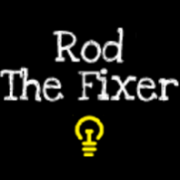
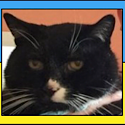
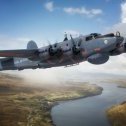

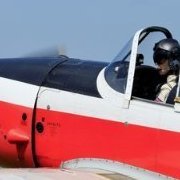
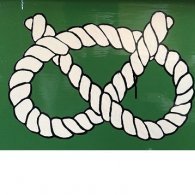

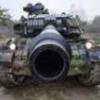
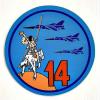
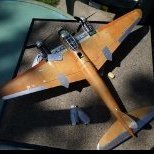

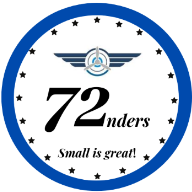

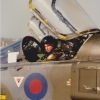

.thumb.jpg.cfc129272ffec824439b15e6013d5952.jpg)
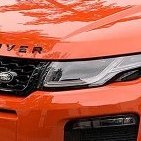
.thumb.jpg.0cb281983c298f55509ab7d9a06994bd.jpg)
.thumb.jpg.b4a5069fd2c2dd5708ce1694345c5b11.jpg)
